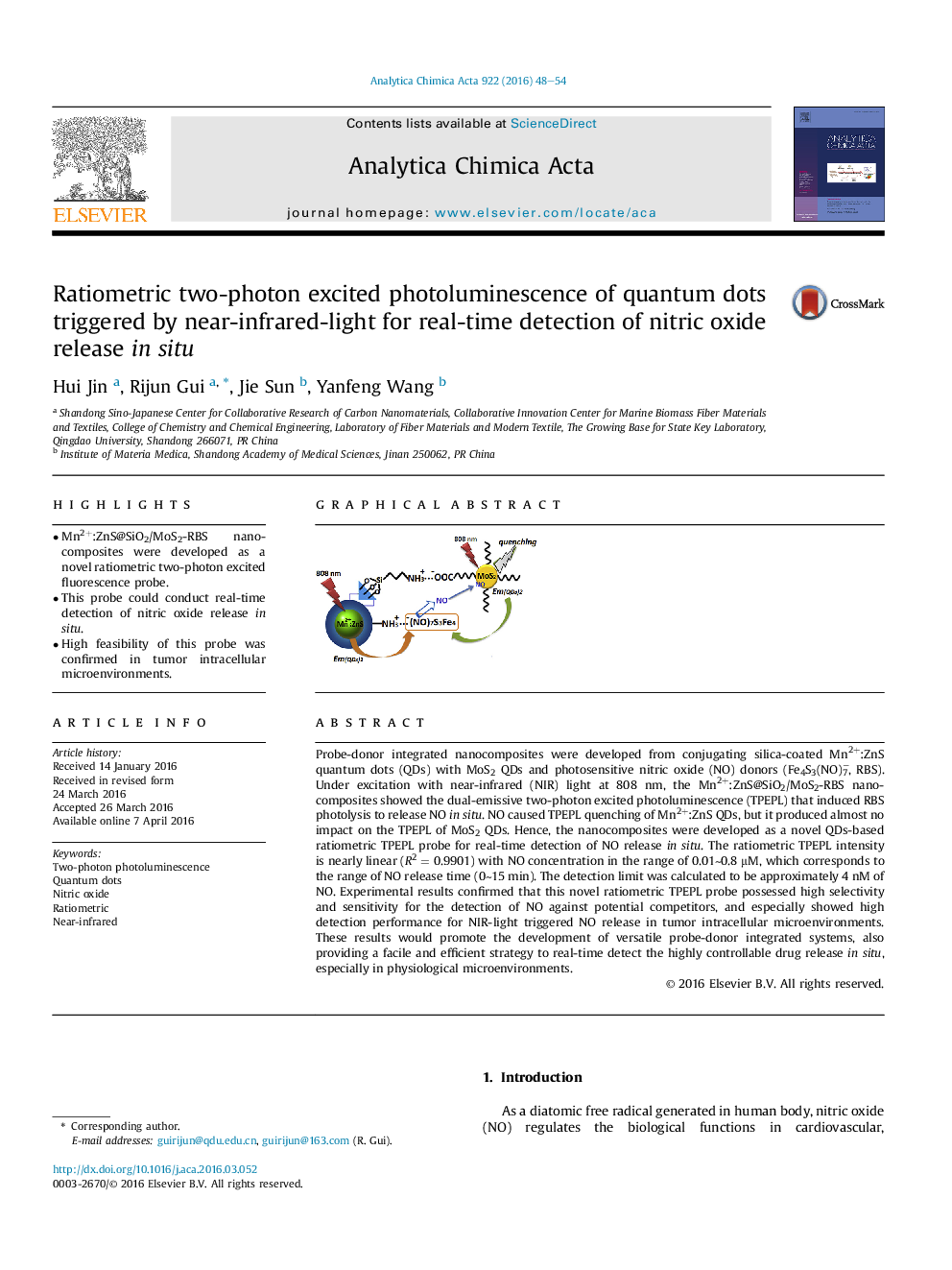| کد مقاله | کد نشریه | سال انتشار | مقاله انگلیسی | نسخه تمام متن |
|---|---|---|---|---|
| 1162998 | 1490910 | 2016 | 7 صفحه PDF | دانلود رایگان |
• Mn2+:ZnS@SiO2/MoS2-RBS nanocomposites were developed as a novel ratiometric two-photon excited fluorescence probe.
• This probe could conduct real-time detection of nitric oxide release in situ.
• High feasibility of this probe was confirmed in tumor intracellular microenvironments.
Probe-donor integrated nanocomposites were developed from conjugating silica-coated Mn2+:ZnS quantum dots (QDs) with MoS2 QDs and photosensitive nitric oxide (NO) donors (Fe4S3(NO)7−, RBS). Under excitation with near-infrared (NIR) light at 808 nm, the Mn2+:ZnS@SiO2/MoS2-RBS nanocomposites showed the dual-emissive two-photon excited photoluminescence (TPEPL) that induced RBS photolysis to release NO in situ. NO caused TPEPL quenching of Mn2+:ZnS QDs, but it produced almost no impact on the TPEPL of MoS2 QDs. Hence, the nanocomposites were developed as a novel QDs-based ratiometric TPEPL probe for real-time detection of NO release in situ. The ratiometric TPEPL intensity is nearly linear (R2 = 0.9901) with NO concentration in the range of 0.01∼0.8 μM, which corresponds to the range of NO release time (0∼15 min). The detection limit was calculated to be approximately 4 nM of NO. Experimental results confirmed that this novel ratiometric TPEPL probe possessed high selectivity and sensitivity for the detection of NO against potential competitors, and especially showed high detection performance for NIR-light triggered NO release in tumor intracellular microenvironments. These results would promote the development of versatile probe-donor integrated systems, also providing a facile and efficient strategy to real-time detect the highly controllable drug release in situ, especially in physiological microenvironments.
Figure optionsDownload as PowerPoint slide
Journal: Analytica Chimica Acta - Volume 922, 30 May 2016, Pages 48–54
